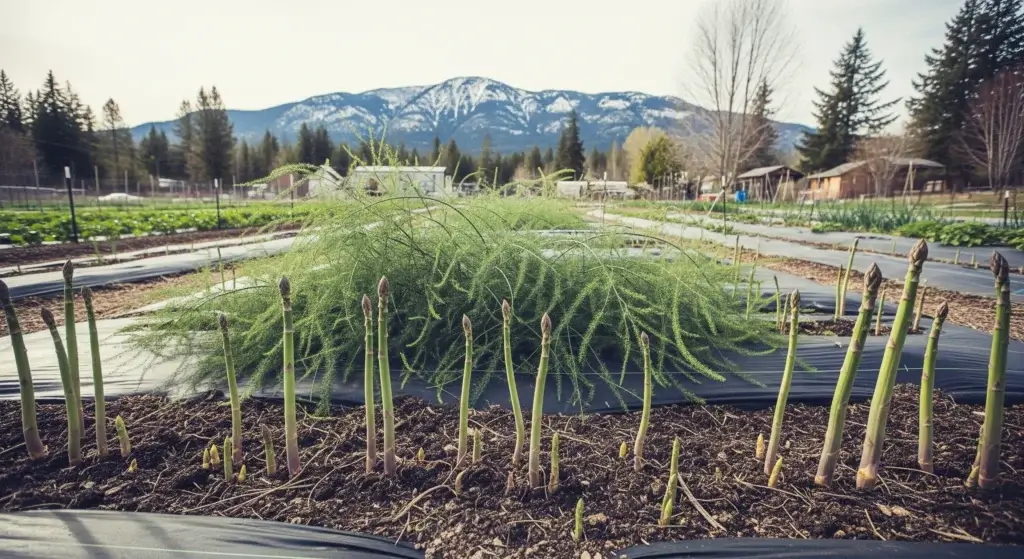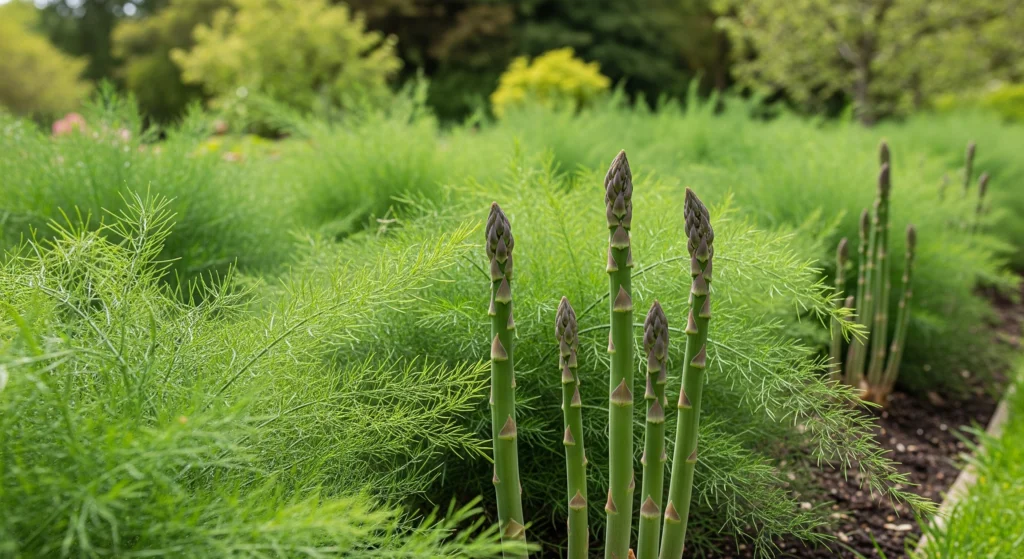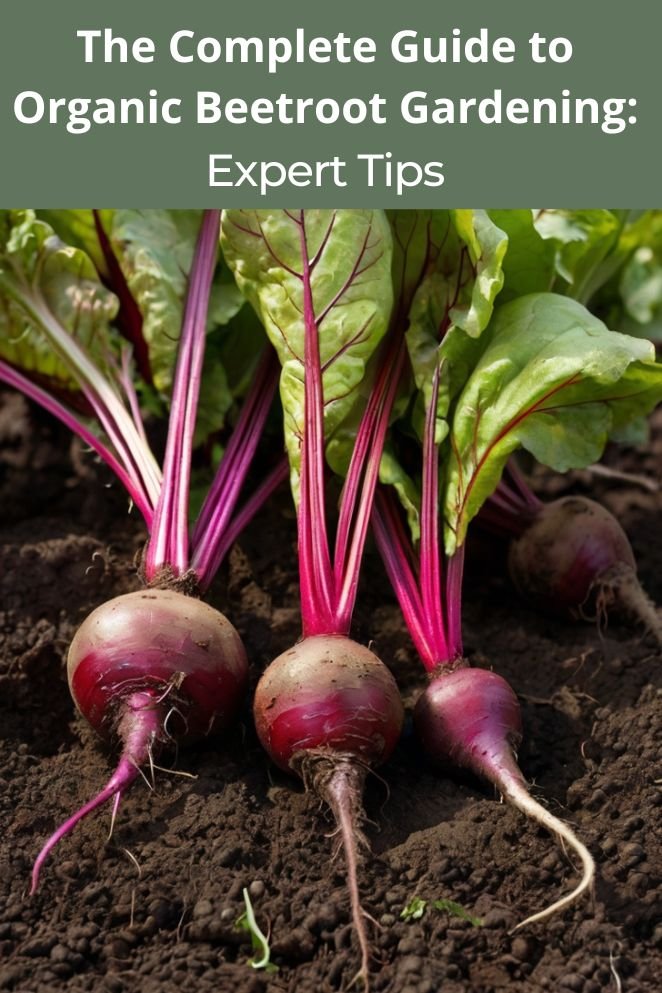
Growing organic beetroot is easier than you think—and super satisfying.
Whether you’re a newbie or already knee-deep in compost, this guide covers how to pick the right varieties, grow them without chemicals, and harvest when they taste best.
Think of it as your no-fuss, beetroot cheat sheet for getting solid results without wrecking your soil.
Choosing the Right Beetroot Varieties for Organic Growing
Picking the right beetroot variety makes a huge difference—especially when you’re growing organic.
Some grow faster, some are easier to manage, and others just taste better or look cooler on a plate.
Early season varieties:
- Detroit dark red – The go-to classic. Super reliable, great for beginners. Deep red roots that grow evenly.
- Chioggia – The candy cane beet. Italian heirloom with red-and-white rings inside. Looks fancy, grows well without fuss.
- Early wonder – As the name says, it grows fast. Ideal if you’re planting in early spring and want a quick win.
Mid to late season varieties:
- Cylindra – Long, tube-shaped roots. Easy to slice and great for pickling. Less waste, more beet.
- Golden beetroot – Milder and sweeter, plus it won’t stain your hands (or cutting boards).
- Bull’s blood – This one’s a looker. Grown mostly for its deep red leaves, which are perfect in salads. Roots are edible too.
When growing organic, stick with heirlooms or open-pollinated types.
They adapt better to your local soil over time and let you save seeds for next season—kind of like the vinyl records of gardening: classic, reusable, and built to last.
Preparing Your Organic Beetroot Garden
If you want good beets, you need good soil. It’s that simple. Beetroot loves loose, rich dirt—think soft cake, not a brick.
If the soil’s too packed or full of rocks, your beets will grow weird and stumpy.
Here’s how to set things up:
- Test your soil. Grab a cheap soil test kit and check the pH—it should land between 6.0 and 7.5. You’ll also find out if you’re low on stuff like nitrogen or potassium.
- Add compost. Mix in 2–3 inches of well-rotted compost or aged manure. No fresh stuff—it’s too strong and can mess with the roots.
- Fix heavy soil. If your soil feels like clay, mix in coarse sand or perlite. You want water to drain, not drown your plants.
- Use raised beds (optional but smart). Build them 8–12 inches high if drainage sucks where you live. Bonus: easier on your back.
And location matters too. Aim for a sunny spot—6 to 8 hours of sunlight is ideal.
But beetroot is chill and can handle a bit of shade, unlike carrots that throw tantrums.
Make sure there’s airflow so fungal diseases don’t show up like uninvited party guests.
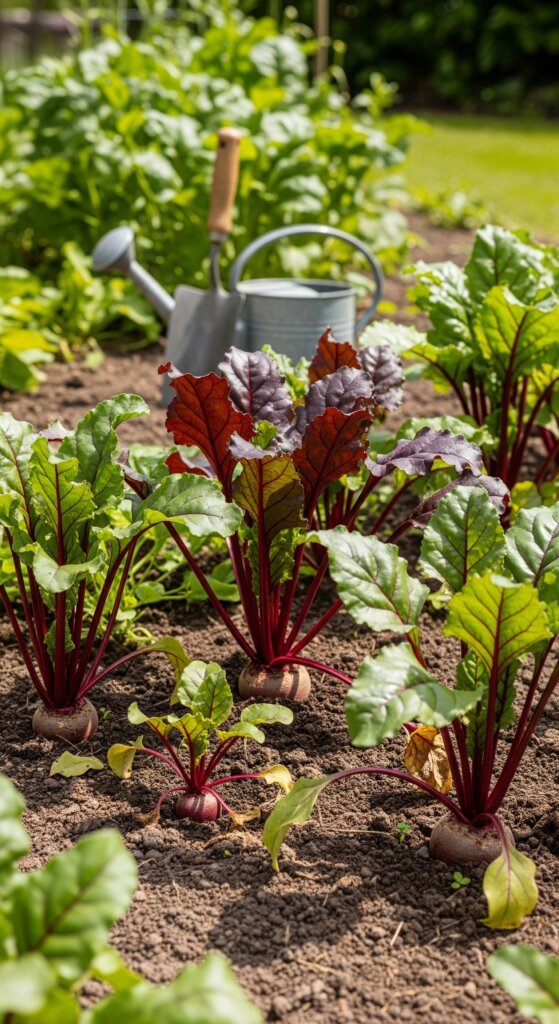
Organic Beetroot Planting Techniques
Beets like it cool, so start planting 2–3 weeks before your last frost. They’re chill like that.
For steady harvests, sow more seeds every couple of weeks.
Here’s the basic playbook:
- Go ½ inch deep in loose, crumbly soil
- Space seeds 2–3 inches apart
- Keep rows 12–18 inches apart
- No transplants—just direct sow them. Beets hate being moved.
- Soil temp? Somewhere between 50–85°F works best
Quick heads-up: beet “seeds” are actually little clusters—like a plant version of a roommate situation.
Each one can sprout 2–4 plants, so once they pop up, thin them out.
Keep the strongest seedling and snip the rest.
Essential Organic Care and Maintenance
Beets are low drama, but they still need some regular care if you want sweet, solid roots.
Water smart, not constant
Give them 1–2 inches of water a week—deep and less often is better than shallow daily splashes.
Think long sips, not little gulps. Too much water = soggy roots.
Too little = dry, woody beets. Find the middle.
Mulch like you mean it
Toss down a 2–3 inch layer of organic mulch to keep the soil cool, damp, and weed-free. Good options:
- Straw
- Dried grass (not from a sprayed lawn)
- Shredded leaves
- Aged sawdust
- Even compost, if you’ve got extra
- It keeps moisture in and gives weeds a harder time.
Thin the crowd
Once seedlings hit 2–3 inches tall, thin them out so there’s one beet every 3–4 inches.
Don’t yank—snip the extras at the base.
Toss those thinnings into a salad—they’re basically fancy microgreens.
And don’t skip weeding. Beets are wimps when it comes to fighting for space, so keep the bed clear.

Organic Fertilizing Strategies
Beets aren’t needy, but if you want nice, round roots—not just a bunch of leaves—you’ve got to feed them right.
Before you plant
Mix 2–3 inches of compost into the soil. That sets them up with slow-release nutrients that last most of the season.
Compost is basically the beet version of meal prep.
While they’re growing
Every few weeks (3–4 is solid), hit them with something light like:
- Fish emulsion – smells bad, works great
- Compost tea – garden nerd gold
Skip high-nitrogen stuff—it makes big leaves but sad, skinny roots.
Want to boost the soil naturally?
- Wood ash – Has potassium. Use a pinch, not a dump truck.
- Bone meal – Phosphorus = strong roots
- Kelp meal – Adds trace minerals and helps with overall growth
Managing Pests and Diseases Organically
Beets are pretty chill when it comes to pests and diseases, but a few troublemakers still sneak in.
Here’s how to handle them without going full chemical warfare.
Common pests
- Flea beetles: Tiny jumpers that leave shotgun-hole dots in the leaves
- Leaf miners: They burrow little squiggly trails inside the leaves
- Aphids: Tiny leaf-clingers that suck sap and bring drama
Organic pest control methods
- Row covers: Throw some light fabric over young plants to block bugs
- Companion planting: Tuck in basil, mint, or even onions nearby to confuse pests
- Beneficial insects: Ladybugs, lacewings, and parasitic wasps eat the bad guys. Let them work.
- Neem oil: Save this for serious outbreaks. Use early morning or evening—never in full sun.
Disease prevention
- Give them space—tight plants = trapped moisture = fungi
- Water at the soil—keep the leaves dry
- Rotate crops—don’t plant beets where you had spinach or chard last year
- Toss sick plants fast—don’t compost them, just get them out
Stay on top of things early, and you’ll avoid most of the mess. Beets don’t need much—just a little attention and a solid backup plan.
Maximizing Your Organic Beetroot Harvest
If you want steady beet harvests all season (without planting a beet farm), here’s how to stretch your garden game a little further:
Succession planting
Don’t plant all your seeds at once.
Sow a new batch every 2–3 weeks from early spring through late summer.
That way, you always have fresh roots coming up—not one giant beet pile all at once.
Grow in containers
Short on space? Beets are totally cool in pots at least 8–10 inches deep.
Stick a few on your patio or balcony.
Just make sure they get sun and stay watered.
Intercropping = smart use of space
Plant beets between slower growers like tomatoes or peppers.
They’ll mature before the big plants shade them out, and you’ll squeeze more out of the same bed.
Save your own seeds
Let a few beets overwinter in the ground.
They’ll flower the next year and give you seeds that are naturally better adapted to your garden.
Just know: they get huge and weird-looking—but totally worth it if you’re into seed saving.
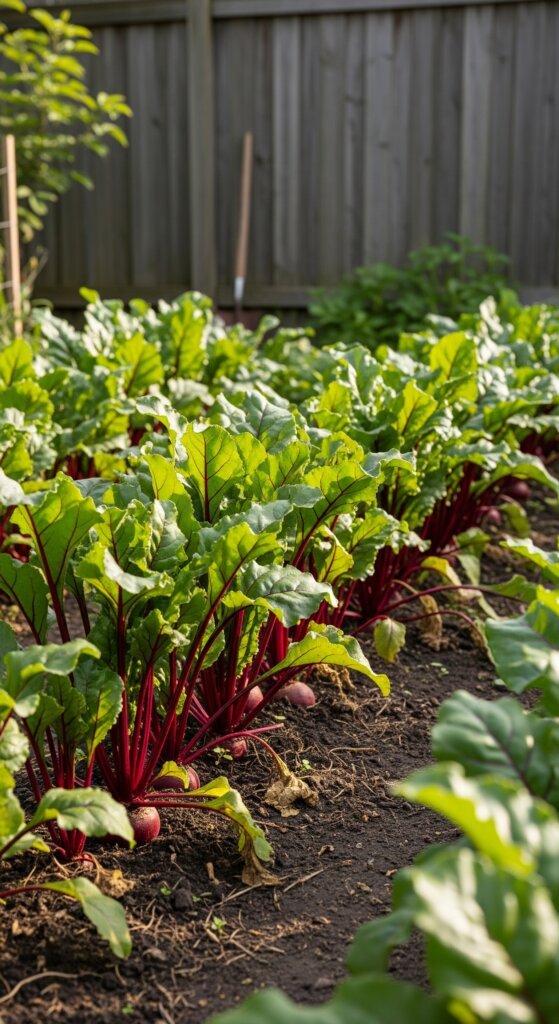
Common Mistakes to Avoid
Even if you’ve grown stuff for years, beets have their quirks.
Here’s what trips people up the most:
1. Not thinning = beet chaos
Each “seed” is a cluster, remember?
If you skip thinning, you’ll get a knot of tiny, weird-shaped roots instead of proper beets.
Snip the extras early and don’t feel bad about it.
2. Watering like a wild card
Too much? Cracked roots.
Too little? Tough and woody.
Beets like steady moisture—think “Goldilocks” zone. Stick to deep, consistent watering.
3. Planting in brick soil
Hard, compacted soil = zero root room. Beets need loose soil to grow round and fat.
If your soil’s heavy, mix in compost or grow them in raised beds or containers.
4. Feeding them like lettuce
Lay off the nitrogen. Too much, and you’ll get lush greens and sad, skinny roots.
Keep the nutrients balanced—aim for root growth, not salad.
5. Waiting too long to pick
If your beets are the size of softballs, you waited too long.
Overgrown beets get woody and lose that sweet flavor. P
ull them when they’re around golf ball to tennis ball size. That’s the sweet spot.
Troubleshooting Common Issues
Stuff goes wrong sometimes—even when you do everything “right.”
Here’s how to troubleshoot common beet drama without losing your mind:
Problem: Huge leaves, tiny roots
You’re basically growing beet bushes instead of beets.
Fix: Chill out on the nitrogen. Feed with something that has more phosphorus and potassium to push root growth instead of just leaves.
Problem: Cracked or split roots
This usually means your watering’s been all over the place—too dry, then too much.
Fix: Keep the moisture even and steady. Think slow and deep watering, not flood-then-drought vibes.
Problem: Seeds aren’t sprouting
You’re staring at dirt, wondering if anything’s happening.
Fix: Check the soil temp—aim for at least 50°F (10°C). And keep the surface evenly moist until the seedlings show up. Dry crust = no-go for germination.
Most beet issues come down to timing, water, and feeding. Get those dialed in, and the rest usually sorts itself out.
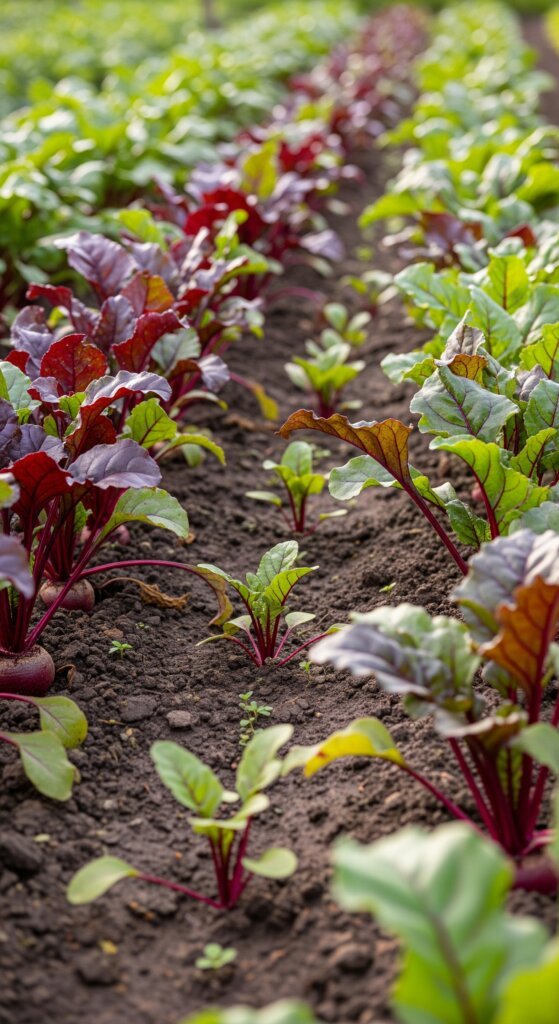
The Future of Your Organic Beetroot Garden
Organic beet growing takes patience and some trial and error—but once you get the hang of it, it’s worth it.
Start small, pick a couple of solid varieties, and track what works in your space.
Every season teaches you something—soil quirks, weather mood swings, which beet tastes best roasted.
Keep notes so you don’t have to guess next year.
Stick with the basics, grow at your own pace, and you’ll end up with earthy, sweet beets that actually taste like something.
From garden to plate—no grocery store beet can beat that.


